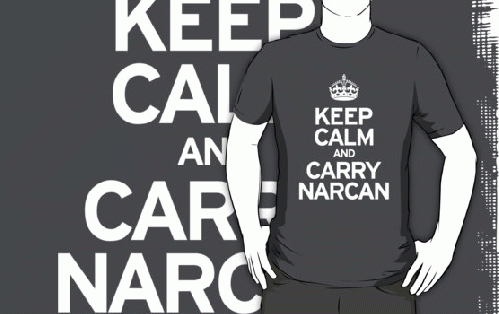"It's a great tool to add to our arsenal," said Espanola Valley, N.M., Chief Eric Garcia, director of public safety. "It's not only weapons that we need to have. The bottom line for law enforcement is that we are there to protect and serve the public, to preserve life and property," in a Feb. 3, 2014 online article of USA Today.
The USA Today Article continues: In Ocean County, N.J., when overdose deaths doubled from 53 in 2012 to 112 in 2013, Ocean County Prosecutor Joseph Coronato "looked at every option to address the problem," including tougher law enforcement, encouraging private companies to build rehab facilities and equipping officers with Naloxone, spokesman Al Della Fave said.
The county will pay for the $25 nasal Naloxone kits with money from the county's drug forfeiture fund, he said. "It'll be the drug dealers who will be paying for this," Della Fave said.
Ocean County will begin training its police officers in all 31 local departments to use Naloxone in Febuary[sic], Della Fave said. "The officers don't want to be standing there helpless waiting for EMS," he said.
It's good to see many in the ranks of the nation's law enforcement and a consensus of our local, state, and federal political leaders having such an open-minded and pragmatic approach to fighting the heroin and opiate epidemic. Instead of looking for punitive consequences, the powers-that-be are searching for remedies. Possibly even solutions....
There are some ugly dynamics at play, however. If Narcan is carried by a known opiate abuser's family members, or seeing that it's carried by the Sheriff's Department personnel in a small, rural, Appalachian county, will this create discord and small town political fallout? Appalachia is Bible-Belt territory, after all, and heroin addiction is mostly seen as an evil, not a sickness. Backwoods and backwards America is not known for its open-mindedness and pragmatism. It's not hard to prognosticate that having local cops, and a large number of select citizens, equipped with Narcan, or having mobile units in place to fight an overdose experienced by one of the locals, may find a big wall of hateful opposition and negative public opinion.

It's as easy and simple as doing the jinx that created the problem in the first place: using a hypodermic to shoot Narcan up a victim's nose.
(Image by redbubble.com) Details DMCA
According to West Virginia Public Broadcasting, in an online article, "The Front Porch: Who's to Blame for Appalachia's Drug Addiction", the opiate epidemic is finding roadblocks in the following areas throughout Appalachia:
- An unwillingness by state and federal officials to pay for treatment, even if it is less expensive and more effective than jailing addicts.
- Prescription drug companies, for marketing painkillers heavily in the region (West Virginia consumes more prescription painkillers per capita than any other state).
- Workers Comp, for only paying for cheaper drugs and not expensive physical therapy for injured workers.
- Drug dealers, who profit from peddling misery.
- People who give drugs to people who then overdose (and should they be charged with felony murder?).
- People with addiction (what about personal responsibility?).
- A general sense of hopelessness in our region that leads to more drug abuse.
Meanwhile, just across the Ohio River from West Virginia and Kentucky, the spread of opiates knows no state boundaries. Portsmouth, Ohio, a city of 20,430 (according to the 2013 federal census), like nearby neighboring towns in West Virginia and Kentucky, once was a coal-mining mecca, but these days, OxyContin is king. Heroin abuse is rampant and pill mills seem to have taken the place of coal mines.
(Note: You can view every article as one long page if you sign up as an Advocate Member, or higher).





